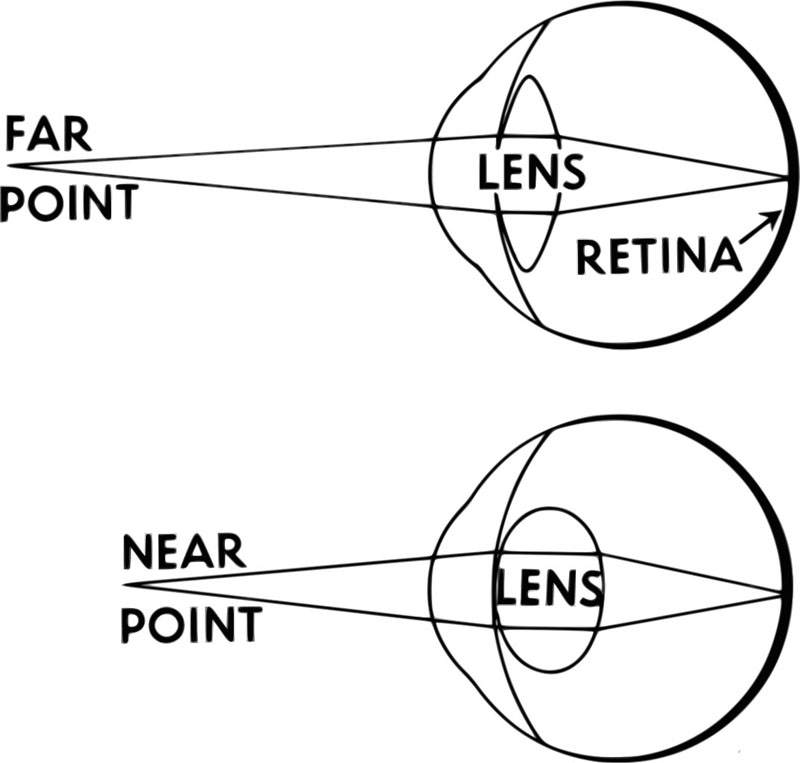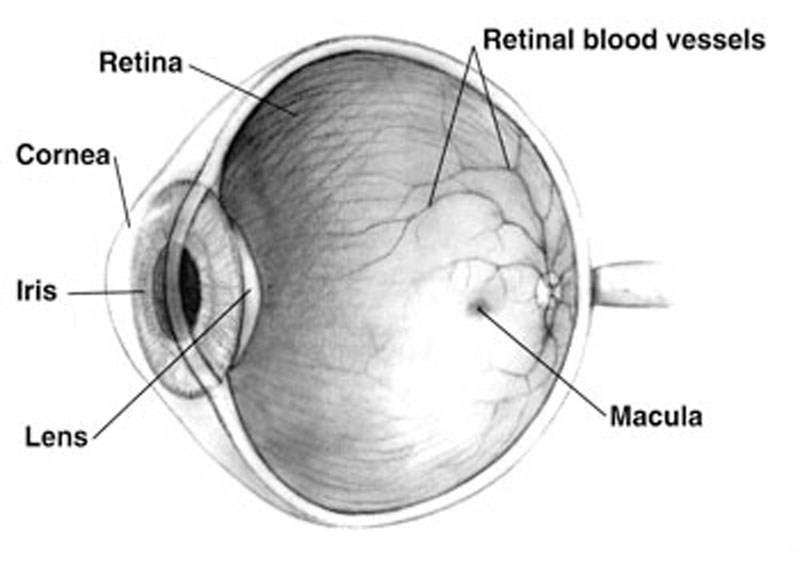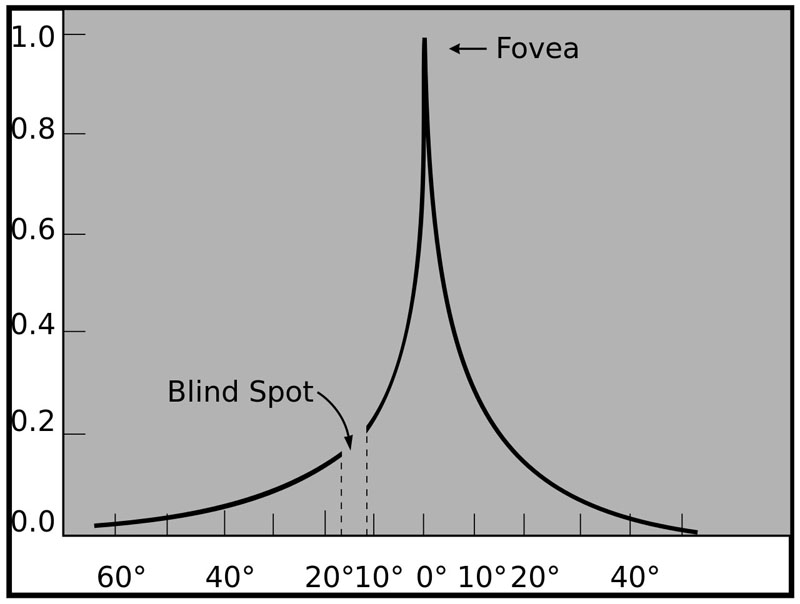Image Formation
- Accommodation is the process by which the vertebrate eye changes optical power to maintain a clear image or focus on an object as its distance varies.
- The retina is the third and inner coat of the eye which is a light-sensitive layer of tissue.
- The fovea centralis is a small, central pit composed of closely packed cones in the eye. It is located in the center of the macula lutea of the retina.
- Visual acuity commonly refers to the clarity of vision. It is dependent on optical and neural factors.


